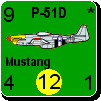Greyshaft
Posts: 2252
Joined: 10/27/2003
From: Sydney, Australia
Status: offline

|
I was going for Yamashita. Unezu may very well be correct... I haven't written that biography yet.
Aged 50 in 1939. General Tomoyuki Yamashita graduated from Hiroshima Military Academy in 1906 and attended the Japanese War College in 1916. After serving as a military attaché to Germany he became head of the Army Affairs Section of the Military Affairs Bureau in 1931. Yamashita participated in the Japanese Army's political maneuvering in the 1930s and supported a 1936 military coup against the Japanese government. It was a sign of the Army's strength that even after the failure of the coup, conspirators such as Yamashito were not jailed but merely posted to remote areas. In Yamashita's case he was made commander of the 40th Infantry Brigade in Korea and by September 1939 had been appointed as Chief of Staff of the Northern China Area Army. The appointment of Hediki Tojo as Minister of War created a problem for Yamashita since he and Tojo supported different military factions, with Tojo in favor of expanding the war in China and attacking the USA while Yamashita opposed both ideas. In December 1940 Yamashita was sent back to Europe as an observer with the German Army and on his return he reported on the comparative obsolescence of the Japanese forces and reiterated the desirability of not going to war with the United States. In July 1941 he was appointed commander of the Kwantung Defence Army and from there he led 30,000 troops in the invasion of Malaya and Singapore earning for himself the nickname 'Tiger of Malaya'. The surrender of Generals Percival and Wainright and over 100,000 British and Australian Forces at Singapore made a deep impression on him and gave him the resolve (ultimately unfulfilled) of never enduring that humiliation for himself. After another tour of duty in Manchuria he was promoted to General and given command of the Japanese 14th Area Army defending the Philippines. There was little that Yamashita could do in the ten days between his arrival in Manila and the invasion of the Philippines by Allies forces under General MacArthur. Yamashita and his troops were outgunned and unsupplied yet they fought on with pitched battles and guerilla warfare tactics until Japan's surrender in September 1945. The Allies dispatched the recently liberated Generals Percival and Wainright to accept Yamashita's surrender. When faced with this humiliation Yamashita chose not to commit suicide on the grounds that he would not be able to stop his own subordinates from following his example. He was charged with war crimes and, after the failure of his appeal to the US Supreme Court, was hanged in February 1946. His claim of not knowing about the atrocities was not challenged by the prosecution but was dismissed as irrelevant. Yamashita's conviction created a precedent in International Law called the 'Yamashita Standard' which (in the words of the United States Senate Committee) holds that "… responsibility for torture, summary execution, or disappearances extends beyond the person or persons who actually committed those acts -- anyone with higher authority who authorized, tolerated, or knowingly ignored those acts is liable for them." (502)
_____________________________
/Greyshaft
|
 Printable Version
Printable Version







 New Messages
New Messages No New Messages
No New Messages Hot Topic w/ New Messages
Hot Topic w/ New Messages Hot Topic w/o New Messages
Hot Topic w/o New Messages Locked w/ New Messages
Locked w/ New Messages Locked w/o New Messages
Locked w/o New Messages Post New Thread
Post New Thread